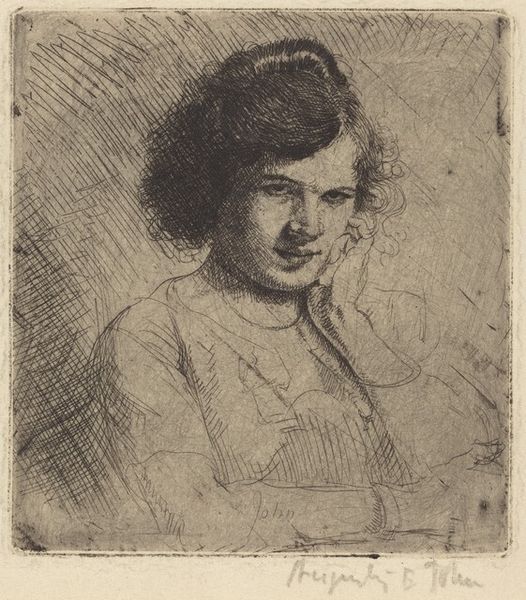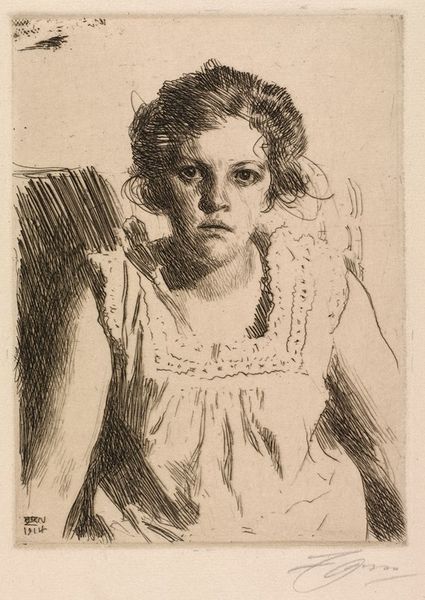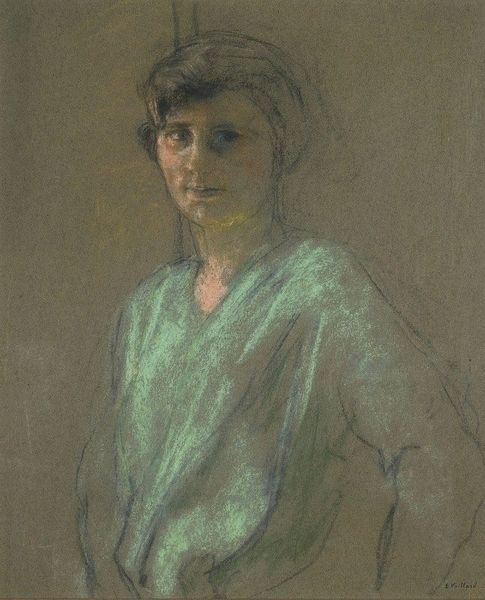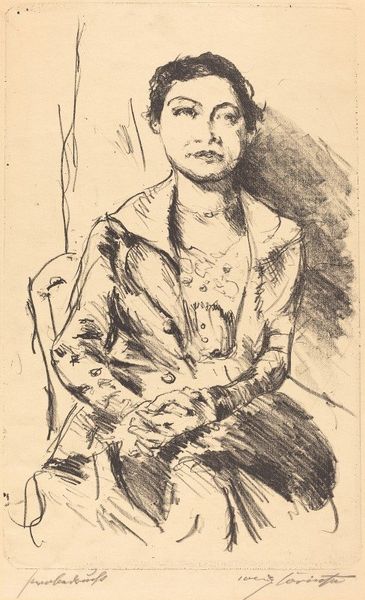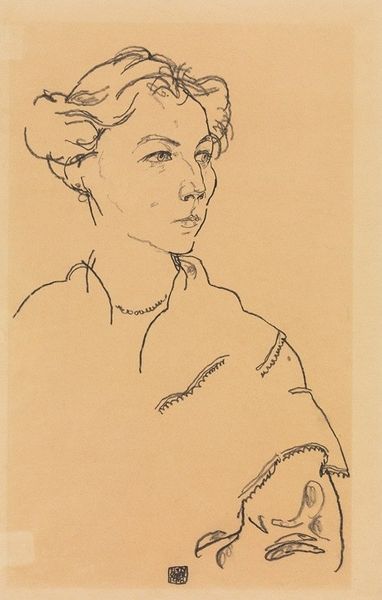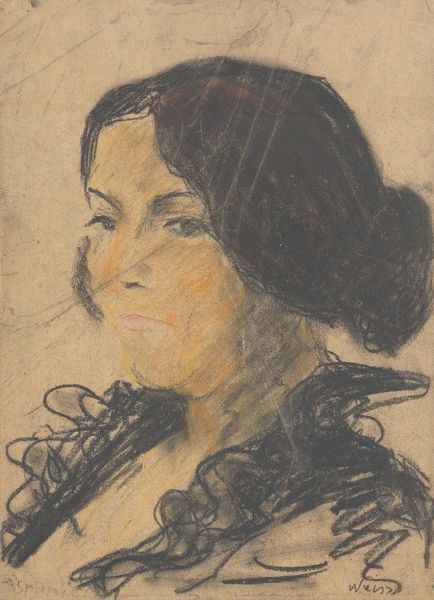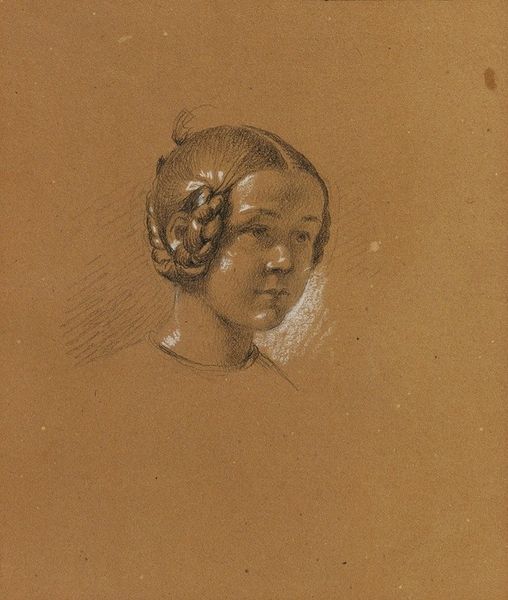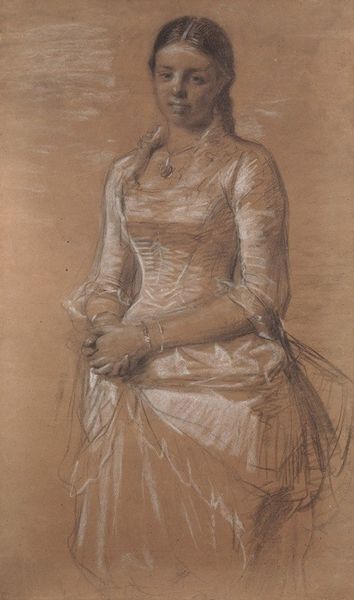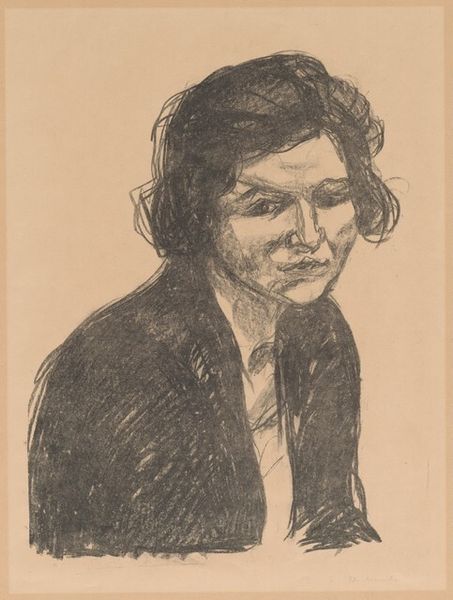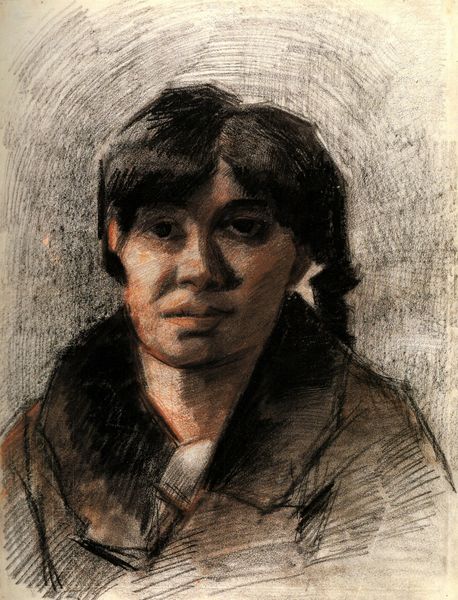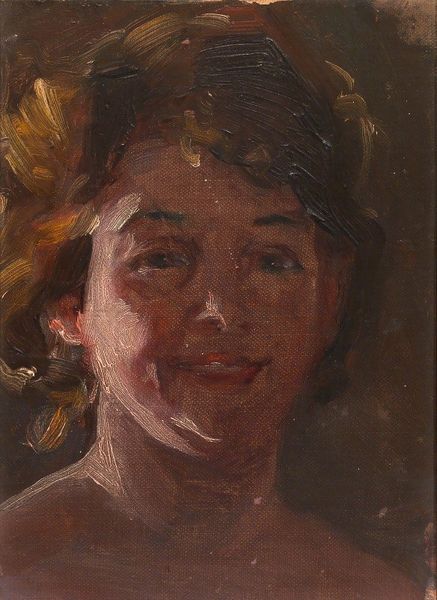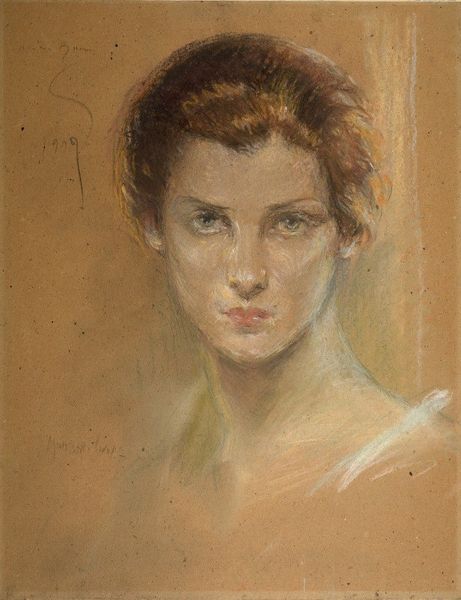
drawing, charcoal
portrait
drawing
facial expression drawing
head
charcoal drawing
figuration
portrait reference
sketch
symbolism
animal drawing portrait
nose
portrait drawing
facial study
charcoal
facial portrait
lady
forehead
portrait art
fine art portrait
realism
digital portrait
Copyright: Public domain
Théophile Alexandre Steinlen captured his daughter Colette with charcoal, a medium that lends itself to intimate portraiture. Here, the direction of her eyes is a powerful conduit. Throughout art history, we see the gaze used to convey a myriad of emotions and psychological states. Think of the direct, confrontational stare in Renaissance portraits meant to assert power and status. Now, consider how, in contrast, Colette's gaze carries a quiet intensity. It's not confrontational, but rather introspective, drawing us into her inner world. Such inward-looking gazes can be traced back to ancient Roman portraiture, yet it evolved through the ages, resurfacing, for example, in the works of the Pre-Raphaelites, who sought to capture the inner soul of their subjects. The ability of the artist to capture the complex psychology of the individual serves as a potent reminder of art's ability to tap into our shared human experience.
Comments
No comments
Be the first to comment and join the conversation on the ultimate creative platform.
